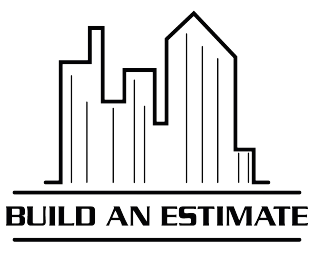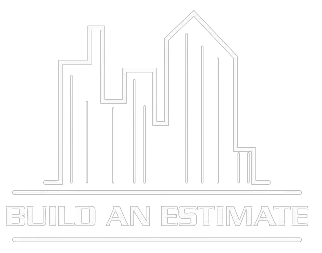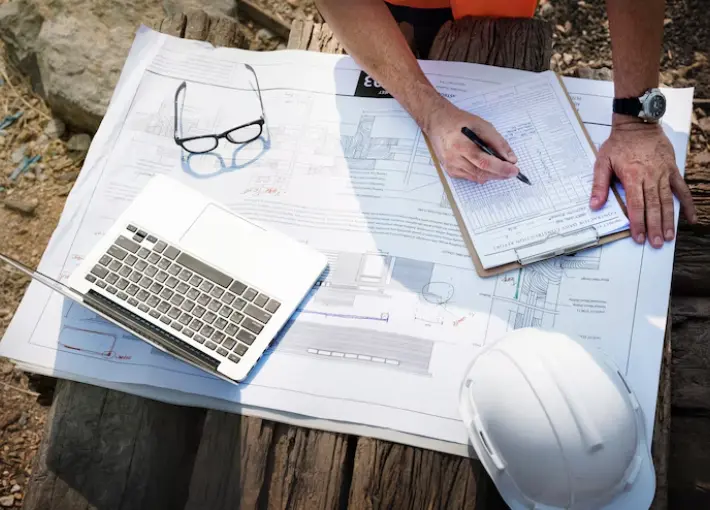- HOME
- SERVICES
- OUR TRADES
- SAMPLES
- Build An Estimate – Accurate Cost Estimating
- CONTACT
- Home
- Services
- Our Trades
- Samples
- Pricing
- Blog
- About Us
- Contact
- HOME
- SERVICES
- OUR TRADES
- SAMPLES
- Build An Estimate – Accurate Cost Estimating
- CONTACT
- Home
- Services
- Our Trades
- Samples
- Pricing
- Blog
- About Us
- Contact

Understanding Construction Drawings: The Blueprint to Building Success
August 8, 2023
Why construction estimating services in New York City are vital
August 16, 2023The Ultimate Construction Estimating Guide
Are you a beginner in the construction industry looking to improve your estimating skills? Look no further! This ultimate construction estimating guide is here to help you navigate the world of cost estimation with expert tips and techniques. Whether you’re a contractor, project manager, or aspiring construction professional, this guide has got you covered.
In this comprehensive guide, we’ll walk you through the fundamental principles of construction estimating, including the importance of accurate cost estimation, the different methods and tools available, and tips for finding the right balance between cost and quality. We’ll also delve into the specifics of estimating for various construction projects, such as residential, commercial, and civil.
With insights from industry experts and real-world examples, you’ll gain valuable knowledge and strategies to optimize your estimating process, improve project profitability, and eliminate costly mistakes. From understanding blueprints to analyzing costs and negotiating with suppliers, this guide will equip you with the essential skills to excel in construction estimating.
Don’t miss out on this invaluable resource that can set you on the path to becoming a master estimator. Let’s get started on your journey to estimating greatness!
What is construction estimating?
Construction estimating refers to the determination of the amount of money needed for the completion of construction work. This involves estimating costs relating to materials, human resources, machines, and other items. There is a need to develop a realistic budget so that the project does not exceed the planned cost.
Estimators collect all the data for example from the blueprints and specifications to establish the quantities and prices of the materials. They also look at the cost of labor which includes the money that may be used to pay workers and time used to accomplish the work. Furthermore, these include what is required for equipment like machines or implements. To make their estimations more precise, most estimators apply specific software.
Different Types of Construction Estimates
There are several different types of construction estimates, each serving a specific purpose. The type of estimate you use will depend on the stage of the project and the level of detail required. Some common types of construction estimates include:
1. Preliminary Estimate:
Also known as a conceptual estimate, this type of estimate is typically done during the initial stages of a project. It provides a rough cost estimate based on limited information and is used to determine the feasibility of the project.
2. Detailed Estimate:
A detailed estimate is a more comprehensive and accurate estimate that takes into account all aspects of the project. It involves a thorough analysis of the project scope, materials, labor, and other associated costs. Detailed estimates are typically used for budgeting and planning purposes.
3. Bid Estimate:
A bid estimate is prepared when a contractor or construction company is submitting a bid for a project. It includes a detailed breakdown of costs, allowing the client to compare different bids and make an informed decision.
4. Change Order Estimate:
Change order estimates are prepared when there are changes or additions to the original project scope. These estimates help determine the cost implications of the changes and ensure that the project stays within budget.
Using the appropriate type of estimate for each stage of the project is essential for accurate cost estimation and effective project management.
Process for Creating a Construction Estimate
Creating a construction estimate involves several steps to ensure accuracy and comprehensiveness. While the specific process may vary depending on the project and individual preferences, here is a general step-by-step guide:
1. Review Project Documents:
Start by thoroughly reviewing the project documents, including blueprints, specifications, and any other relevant information. This will give you a clear understanding of the project scope and requirements.
2. Perform Quantity Takeoffs:
Perform detailed quantity takeoffs for all materials and labor required for the project. This involves quantifying every component of the project, from bricks and mortar to electrical wiring and plumbing fixtures.
3. Research and Obtain Quotes:
Research and obtain quotes from suppliers and subcontractors for all materials and labor. This will help you determine accurate costs for each component of the project.
4. Calculate Costs:
Calculate costs for each item based on the number of takeoffs and quotes obtained. Take into account any additional costs such as taxes, transportation, or equipment rental.
5. Factor in Overhead Costs:
Factor in overhead costs such as permits, insurance, and administrative expenses. These costs should be allocated proportionately to each item in the estimate.
6. Review and Adjust:
Review the estimate to ensure accuracy and completeness. Make any necessary adjustments or revisions based on new information or changes to the project scope.
7. Present the Estimate:
Present the estimate to the client or relevant stakeholders, along with a detailed breakdown of costs. Clearly explain the assumptions and basis for the estimate to facilitate understanding and transparency.
By following a structured and systematic approach, you can create accurate and comprehensive construction estimates that form the foundation for successful project execution.
Importance of Accurate Construction Estimating
An estimating guide for construction is important to the success of any construction project, and it needs to be carried out properly. Here are the key reasons why it is important:
1. Budget Management
It is necessary to determine the approximate value to be spent on the project as this promotes good control of the budget. By quantifying all the expenses such as construction labor estimating guide for labor expenses, material, and others, there won’t be any extra spending on the part of the project and it would remain within the set budget.
2. Project Planning
Probabilistic estimates show the precision and exactness of the execution roadmap throughout the undertaking. It assists in scheduling activities, identifying where to find resources for a given project, and how long it takes to accomplish the task. This is good for any project, as it establishes an efficient means of moving the work forward without continued interruptions.
3. Risk Reduction
Such estimates reduce risks because one is capable of foreseeing all probabilities of the costs that might be involved as well as other difficulties. This can help in planning and budgeting to avoid shocks, which if encountered in a project, can be costly and disruptive.
4. Client Trust
This enhances client confidence in our ability to offer reliable estimates within set timelines. It depicts professionalism and reliability, making the clients to be inclined to approach you, to obtain your services. Clients do not like their lawyers to conceal certain costs from them but rather expect good rapport in this area.
5. Competitive Bidding
Budgeting is crucial to establishing an estimate for construction projects, especially in a highly contested construction industry. These include detailed and realistic estimates indicating knowledge of the project, the ability of the project team to execute within the given budget, and time constraints.
6. Profitability
They confirm all cost requirements are taken into consideration as well as shield profit margins. They assist in defining accurate pricing strategies so that no gross underestimations result in high losses.
Overall, construction estimating is crucial for cost control, scheduling, minimizing risks, building trust with customers, winning bids, and achieving profitability. It acts as the framework on which all successful construction projects are built, thereby guaranteeing a high degree of organizational efficiency during project delivery.
Key Factors to Consider in Construction Estimating
The following are essential factors that are vital in construction project estimation:
1. Building Material Costs:
The first step towards cost estimation is to determine the price of the materials. Price variations can be attributed to quality and origin of the product as well as the general market situation. When estimating the cost it is advisable to use the most recent cost data available in literature to reduce the possibility of a difference between the estimated cost and the actual cost of the project.
2. Labor Costs:
Incorporate the pay for the wages and other bonus including other employees involved. This can be its own employees as well as the sub-contractors These are the total man hours that have been employed for the contracted job. Other important aspects within the labor cost that may vary include experience, skill of the workers and rates within the region.
3. Detailed Estimates:
Always make sure that you carry out detailed estimates that do not have any oversight regarding the project. This entails costs that are incurred in sourcing the materials and also the labor cost, other overheads, indirect costs and any other possible contingency expenses which may be incurred in the process.
4. Overheads and Indirect Costs:
Accompany expenses that are not directly related to activities in the project but are required to complete the project like the cost of electricity, registration of office space, or the costs of maintaining equipment among others.
5. Contingencies:
Allocate an appropriate part of the budget for contingencies or any changes that may occur in the course of the projects. This avoids risks and helps in maintaining the cash flow throughout the proposal of the project.
6. Project Scope:
Ensure you control the scope of your project so that it does not expand out of control. This entails recognition of all project needs, specific attributes, and other qualitative characteristics.
7. Construction Site Conditions:
Conduct site conditions analysis to your maximum potential. Structural issues such as the topography, the ease with which equipment and personnel are accessed and the state of developed infrastructure within the project area can greatly influence costs and time.
8. Accuracy and Precision:
Incorporate additional, more accurate estimate techniques with the use of online tools and other technological aids. They can be used in variances when it comes to quantity takeoffs and can also be interfaced with takeoffs software systems.
9. Market Conditions:
Develop awareness of current supplies and demand that influences the technical price of materials and labor availability.
By taking these factors into account, construction estimates will be generally more precise and trustworthy, thus increasing the probability of project success.
5 Tools and Software for Construction Estimating
Here is a summarized list of five top construction estimating software tools. These applications offer various features to suit different needs, helping you choose the right one for your projects:
1. STACK
STACK is a cloud-based software mainly intended for preconstruction, and it has a specifically focused estimating functionality. It also allows the generation of a bill of material, branding the proposal, and creating branded bids involving the use of pre-built and additional assembly libraries. They are trade specific databases, plan markup tools and collaborative work options in case of team project management. STACK has three editions and a trial version for testing the software before purchasing it.
2. ProEst
With estimating tools developed based on the specific requirements of civil construction, subcontractors, general contractors and many more, ProEst assures contractors of a variety of options that will be of great benefit to them. This is a forecasting analysis which uses past trends to estimate the prospective revenues. The software allows the generation of reports for the stakeholders and links other construction management applications to track modifications. For its ProEst version, there is a yearly license fee that grants the user indefinite access to the application, training in its application, and customer service options.
3. Buildertrend
Buildertrend is an example of a cloud-based application geared mainly towards commercial & specialty contractors. Estimate help and proposal development are some of the benefits offered by this instrument to the users. The target software can import information from other sources and based on templates if any or create them. It also contains modules for digital signatures’ requests and comes in two versions — while only one of them is capable of estimating and bidding. Some of the special features of Buildertrend include the following: trial version with 30 days’ free usage; a payment plan that encompasses monthly subscription.
4. SimPRO
SimPRO is mainly focused on service, maintenance, and project contractors. They are quote or estimate creating, modifying, and scheduling tools. It also has provisions for preparing individual cost estimates with built-in assemblies and determining labor costs and also updating the cost database for the use of suppliers in future. Features of subscription plans are the offered training and consultation services. The specific price of simPRO can be gotten from the firm itself, The exact price of simPRO cannot be ascertained here For more information on the prices of the software, one needs to contact simPRO.
5. Buildxact
Buildxact is a bid and build solution that was aimed at the small contracting segment, such as home builders and remodelers. The estimated management, purchasing, and scheduling processes are conducted using the cloud-based platform for office and remote work. Some of the functionalities are highly amplified and consist of comprehensive zest, automatic quotations, and even web-enabled applications for mobile devices. Buildxact sells three versions of the software with monthly subscription and trial version which is valid for 14 days accompanied with an online demo.
Each of these tools has its own features that can add value to the estimating and project management functions.
Pros and Cons of Estimating
Pros of Estimating
Better Planning: Estimating contributes to the formulation of a realistic project plan that determines the specific activity to be accomplished by the project team. The above information assists in doing time and resource planning to enable good planning of tasks.
Cost Control: When there is a clear estimate of cost, expenses are easier to manage and likely, the expenses will not be higher than the estimate. They include the following benefits Cost: It assists in the identification of potential opportune cost savings.
Risk Management: Estimating shows the potential risks in the early stage of the project. This enables risk management professionals and the entire organization to have more time on their hands to assess risks and time that could be used to prepare for the uncertainties that come with risks in advance.
Stakeholder Communication: Estimates also make it possible for a stakeholder to have a forecast of what to anticipate in a given period. One it aids in managing expectations properly and enhancing the flow of communication between the business the clients and the team.
Resource Allocation: Proper estimates help to make the right resources available at the right quantity and at the right time. This makes work to be done faster and reduces the overall time taken to complete it.
Cons of Estimating
Time-Consuming: This is especially so with the task of estimating which could take a long time under certain circumstances. It consists of analysis and research, which could take a long time to complete before the actual work of a project is initiated.
Inaccuracy: They rely on assumptions and past data to provide the desired estimation. If these assumptions were wrong then the estimate could be wrong and this would lead to a lot of problems such as delays in the execution of the project coupled with many other costs that were not envisioned when preparing the initial estimate.
Overconfidence: Avoid writing sentences that contain too many estimates because you may be overconfident in writing your content. They might also fail to notice other threats or adjustments that may be lethal to the project.
Complexity: Estimating can often be a complication, especially when working on large and multifaceted projects. It might be using tools and techniques that may be expensive or may need the services of a professional to acquire.
Challenges in Construction Estimating
Construction estimating can be a complex and challenging task, with several potential pitfalls along the way. Here are some common challenges in construction estimating and strategies to overcome them:
1. Lack of Information:
Insufficient or incomplete project information can make accurate estimation difficult. To overcome this challenge, focus on gathering as much information as possible before starting the estimating process. Communicate with the client or project team to clarify any ambiguities and request additional details if necessary.
2. Changing Project Scope:
Changes to the project scope can significantly impact the accuracy of the estimate. To overcome this challenge, establish a clear change order process and ensure that any changes are properly documented and reviewed. Regularly update the estimate to reflect any changes and communicate these changes to the client or stakeholders.
3. Inaccurate Quantity Takeoffs:
Inaccurate quantity takeoffs can lead to significant cost discrepancies. To overcome this challenge, invest time and effort in conducting thorough quantity takeoffs. Double-check measurements and ensure that all components of the project are accounted for. Consider using software or tools that automate the quantity takeoff process and reduce the risk of errors.
4. Fluctuating Material and Labor Costs:
Material and labor costs can fluctuate over time, making it challenging to accurately estimate project costs. To overcome this challenge, stay updated with market trends and industry news. Regularly review and update cost databases or consult with suppliers and subcontractors to obtain the most current pricing information.
5. Over-Optimistic Estimation:
Over-optimistic estimation can lead to underbidding and potential financial losses. To overcome this challenge, adopt a conservative approach to estimating. Consider potential risks and contingencies, and build in a buffer to account for unforeseen circumstances or cost fluctuations.
By being aware of these common challenges and implementing strategies to overcome them, you can enhance the accuracy and reliability of your construction estimates.
Techniques for More Accurate Estimating
1. Stop estimating the old school style: The current estimating software should be replaced by a modern one in the interested company in order to increase estimation accuracy. The use of digital tools will allow you to utilize features such as computation, update frequency, and reusable templates to improve accuracy and efficiency.
2. Build a Strong Network: Develop relationships with suppliers, subcontractors, and industry experts. They can provide valuable insights, advice, and assistance in obtaining accurate quotes and information. A strong network can also help you stay updated with market trends and industry news.
3. Use Historical Data: Utilize historical data from past projects to inform your estimates. Analyze similar projects and their associated costs to identify patterns and trends. Historical data can serve as a valuable benchmark for estimating future projects.
4. Maintain Detailed Records: Keep detailed records of all estimates, including assumptions, calculations, and supporting documentation. This will help you track and analyze the accuracy of your estimates over time. By reviewing past estimates, you can identify areas for improvement and refine your estimating process.
5. Regularly Review and Update Cost Databases: Maintain up-to-date cost databases that reflect current market conditions. Regularly review and update these databases to ensure that your estimates are based on accurate and relevant information.
6. Seek Feedback: Seek feedback from clients, colleagues, and industry peers on your estimates. This feedback can provide valuable insights and help you identify areas for improvement. Actively incorporate feedback into your future estimating processes to continuously enhance accuracy.
By adopting these tips and techniques, you can significantly improve the accuracy and reliability of your construction estimates.
Role of Construction Estimating in Project Management
Construction estimating plays a crucial role in project management. It serves as the foundation for project planning, budgeting, and resource allocation. Here are some key ways in which construction estimating impacts project management:
1. Project Planning: Accurate construction estimating provides the necessary data and insights to develop a detailed project plan. It helps identify project milestones, dependencies, and critical paths. By understanding the estimated costs and timelines, project managers can develop realistic and achievable project plans.
2. Budgeting and Cost Control: Construction estimating forms the basis for budgeting and cost control throughout the project lifecycle. Accurate estimates allow project managers to allocate resources effectively, track costs against budgets, and identify any cost overruns or savings. By closely monitoring costs, project managers can make informed decisions and take corrective actions as needed.
3. Resource Allocation: Construction estimating helps project managers determine the resources required for the project, including labor, materials, and equipment. By accurately estimating resource needs, project managers can ensure that the right resources are available at the right time, minimizing delays and disruptions.
4. Risk Management: Construction estimating plays a vital role in identifying and managing project risks. Accurate estimates help project managers identify potential risks and develop contingency plans. By having a clear understanding of the estimated costs, project managers can assess the financial impact of potential risks and take proactive measures to mitigate them.
5. Stakeholder Communication: Construction estimating provides project managers with the necessary information to communicate effectively with clients, stakeholders, and the project team. Accurate estimates help set realistic expectations and facilitate transparent communication. By keeping stakeholders informed about estimated costs and progress, project managers can build trust and maintain strong relationships.
In summary, construction estimating is an integral part of project management, providing critical data and insights to support effective decision-making and project execution.
Construction Estimate Samples
1. Project Overview
This estimate is for single home construction at 123 main street any town, for a single-family residential house. The project entails the ability to construct a home with three bedrooms, two bathrooms, a kitchen, and a living area and has an area of 2,500 square feet.
2. Site Preparation
- Clearing and Excavation: $5,000
- Demolition of Existing Structures: $2,000
- Grading and Leveling: $3,000
- Total Site Preparation: $10,000
3. Foundation Work
- Concrete (300 cubic yards): $15,000
- Rebar and Steel Reinforcement: $2,500
- Labor: $5,000
- Soil Testing: $1,000
- Total Foundation Work: $23,500
4. Structural Framework
- Lumber and Steel Beams: $20,000
- Nails, Screws, and Other Materials: $2,000
- Labor: $15,000
- Engineering Services: $3,000
- Total Structural Framework: $40,000
5. Exterior and Interior Finishes
- Roofing Materials: $7,000
- Windows and Doors: $8,000
- Insulation: $3,000
- Drywall and Painting: $10,000
- Flooring (hardwood, tiles): $12,000
- Labor: $15,000
- Total Exterior and Interior Finishes: $55,000
6. Electrical and Plumbing
- Electrical Wiring and Fixtures: $10,000
- Plumbing Pipes and Fittings: $8,000
- HVAC System Installation: $6,000
- Labor: $12,000
- Total Electrical and Plumbing: $36,000
7. Permits and Inspections
- Building Permits: $3,000
- Inspection Fees: $2,000
- Total Permits and Inspections: $5,000
8. Contingency Fund
- 10% of Total Estimate: $16,150
9. Total Cost
- Total Estimated Cost: $177,650
10. Additional Information
- Estimated Timeline: 6 months
- Potential Delays: Weather conditions, supply chain issues
- Point of Contact: John Doe, Project Manager, (555) 123-4567
This construction estimate guide gives a correct summary of all expense predictions thus giving forthright and clear data to all or any concerned parties.
How to Hire an Expert Construction Estimator?
It is crucial to hire an experienced construction estimator to make sure you have the best cost estimation for your construction business. Here is the construction cost estimating guide to help you hire the right professional:
1. Define Your Needs
Determine the merits of particular conditions for your given project. To acquire a clear and concise vision of the work to be done, the type of material, and the period that will be required to complete the project. This is useful when the purpose is to select an estimator who meets the requirements and experience level.
2. Search for Qualified Estimators
Take your time and try to find people who meet the criteria which include, certification in construction estimation. Accompanying this qualification, please look for the ASPE or an equivalent certification. You can search for candidates on structures such as /in professional networks on social networks, or in boards, and company recruitment websites and portals.
3. Review Portfolios and References
Potential candidates’ portfolios could be reviewed to have an initial glimpse of their previous work. Look for references and call previous clients as they can provide insight into their performance and their efficiency.
4. Conduct Interviews
Interview the shortlisted candidates. Inquire on how they estimate the work, likely software platforms they use in providing estimates and dealing with scope creeps. This assists in card sorting allowing one to understand their approach and expertise.
5. Evaluate Communication Skills
The estimator must act as a spoken and written word of communication. Disclosure of information is crucial for clients to set project details and get correct quotes.
6. Check for Technology Proficiency
Thus, today’s estimating calls for knowledge of software. Make sure the estimator is up to date with the Software and Technology that should be used in calculating the accurate estimate.
7. Consider Hiring Experts
As a way to make it easier for you, you may get professional estimates from Build An Estimate and get started with your search. They provide professional estimators with many years of experience offering comprehensive and precise construction estimates to ensure your project is correctly cost and time estimated. More details can be obtained on their website or by getting in touch with them.
8. Finalize the Contract
When you have your choice of the right candidate, review and agree on the conditions of the contract. They should be very specific on all aspects of the job in terms of time frame, and payment modality among others.
If you have followed these steps, you can employ a competent construction estimator and increase the chance of the success of your project.
When to Use a Construction Estimate?
The construction estimate is an important part of any construction project, particularly in the process of planning and implementation of the project. It gives a clear account of any additional expenses that might develop for the project and can check if the project is being delivered within the set financial and time constraints. Here are the key steps and scenarios when you should use a construction estimate:
1. Initial Planning Phase
While conducting each step in the planning phase, use a construction estimate to determine the kinds of work that are to be done and their possible costs. This assists in the maintenance of the budget and determining the changes that should be made according to the cost of the project.
2. Budgeting and Financing
A detailed construction estimate is necessary to get the loan to finance the project. The cost estimates are relevant to evaluating project success by banks and investors interested in funding the project. An accurate estimate is financially responsible and moves planning forward.
3. Comparing Contractor Bids
Construction estimates are also useful in determining the different bids presented by contractors when they are solicited to tender for a project. It helps to determine which bids meet appropriate criteria so that the best contractor with the lowest price and quality is chosen.
4. Project Management
For the duration of the work, the construction estimate should be used to keep track of and control the expenses and totals. When things go wrong and the actual cost deviates from the estimate, doing so will alert the project manager and other stakeholders before the situation gets out of hand and causes a severe breach of the allocated budget.
5. Change Orders
Regarding the project’s construction, it is not unusual for there to be alterations to the project’s specifications. A construction estimate also assists in determining the effects of these changes to control for these changes and their effect on the budget.
Why is estimating important before bidding on a construction job?
Cost estimation before and after the bid in construction work is important in some of the following ways. It increases the reliability, sustainability, and probability of success of the project. Here are the key steps and why they matter:
1. Accurate Cost Prediction
Estimating makes it possible to forecast the total cost of the project and hence it is considered an essential tool in project management. This comprises material costs, human resources, tools, and any other costs needed to accomplish the financial targets. Understanding the total costs allows you to avoid the submission of low bids or high bids within the context of the tendering process.
2. Financial Planning
When the estimate is fine, it entails direction on the way forward with an ideal amount. Effective financial planning assists in balancing the finances and makes sure that adequate funds are available during the project. This way, one avoids coming across any shocks that might harm the financial aspect of the project as well as facilitates the progress of the project.
3. Risk Management
Estimating facilitates the assessment of all possible risks and the other foreseeable costs that may be encountered. By having them in your estimate, you can provide for contingencies hence reducing the chances of the project being delayed or undergoing steep rises in cost.
4. Resource Allocation
When you have an accurate estimate, it is easy to organize resources in the right manner. This involves the right scheduling of labor, procuring materials at the right time, and checking on the availability of equipment at the correct period. Effective resource management helps in improving the overall outcomes of projects.
5. Client Confidence
To sum up, these accurate estimates increase the level of confidence in the client. Observing professionalism and writing concerning such values as transparency also contributes to the success of the bid and the performance of long-term contracts with clients.
To improve the efficiency of your estimates, you should take an independent estimator like Build An Estimate. Professional estimators will provide their experience, updated knowledge, and proven strategies for your work. They utilize sophisticated systems and software to minimize the errors in the bid amount and to ensure that the bids are well-competitive, and at the same time, profitable. Seeking the services of a professional estimator is time-saving, and stress-alleviating as well as boosts the probability of winning construction tenders.






